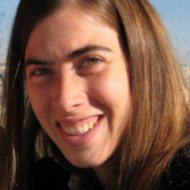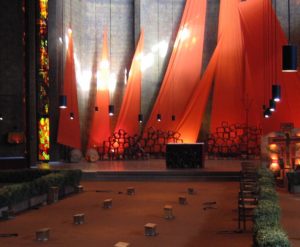In an article entitled “Salvation is from the Jews,” the late Richard John Neuhaus wrote the following with regard to Jewish-Christian dialogue: “I suggest that we would not be wrong to believe that this dialogue, so closely linked to the American experience, is an essential part of the unfolding of the story of the world.” The rivalrous and troubled tale of these two religions has been a constant thread in the history of the West, and the need for dialogue and mutual understanding is as urgent as it has ever been. The tumultuous events of the twentieth century have yielded a new chapter in the relationship between Christians and Jews, one that holds great promise for healing, reconciliation, and redemptive partnership.
As an institution committed to cultural engagement and a global approach to education and spiritual formation, Fuller Seminary places a premium on interfaith dialogue. Since 1971, Intersem has been one of the rich opportunities afforded to Fuller students to engage in deep dialogue and meaningful relationship with Jewish (and Catholic) seminarians.
In my three years of attending and serving on the Intersem planning committee, I have grown and been challenged in ways that will continue to profoundly shape me as a person and religious leader. Two particular moments from this most recent Intersem retreat are etched into my mind as poignant instances of vulnerable encounter with the religious Other.
The first of these experiences came during the Protestant worship service. As the celebrants were serving communion, an invitation was extended to the Jewish and Catholic participants to come forward to receive a blessing—in this case, the priestly blessing of Numbers 6:24-26. My eyes filled with tears as I watched my Jewish seminarian friends reach the front of the line. The Protestant celebrants laid hands on them and recited the blessing that holds such great significance in the Jewish tradition. “May the Lord bless you and keep you; may the Lord make his face shine upon you and be gracious unto you; may the Lord lift up his face onto you and give you peace.” It seemed as though this loving invocation of divine favor alone could undo in part the mutual acts of discord that litter the Judeo-Christian past. In that moment, the words of 1 Peter 4:8 were powerfully actualized, for love indeed covered over a multitude of sins.
The second significant experience came during the final dialogue session. My dialogue group was discussing the role of the Torah scroll in Jewish worship services and the Eucharist in Catholic worship services. Members of the group were commenting on how both the Torah and the host are deeply revered sacred objects, and how the elevation of the object serves as a climactic moment within the worship service. This alone was an important moment of connection and mutual understanding, but the conversation went one step deeper as we realized together the underlying relationship between the Torah scroll and the host.
For Jews, the Torah is the living word through which God has revealed the pattern of faithful living to the people of Israel. As the Torah is placed back into the ark, Jews recite the words of Proverbs 3: “It is a tree of life to those who embrace it; those who lay hold of it will be blessed. All its ways are pleasant ways and its paths are paths of peace.” Jesus too was the living Word of God, and through his incarnation Christians experience the full revelation of God in the world. The Torah scroll and the host function similarly because fundamentally they represent the same thing. Jesus, whose body is mysteriously present in the host, is the living Torah. As we made this connection, I was reminded of the words of Jewish New Testament scholar Amy Jill Levine: “For far too long Jesus has been the wedge that drives Christians and Jews apart. I suggest that we can also see him as a bridge between us.” In this particular case, Jesus was indeed a bridge.
According to Diana Eck, one cannot ever fully understand their own religion until they have studied the religion of others. May we embody this truth as we prepare for lives of service in the religious world.


